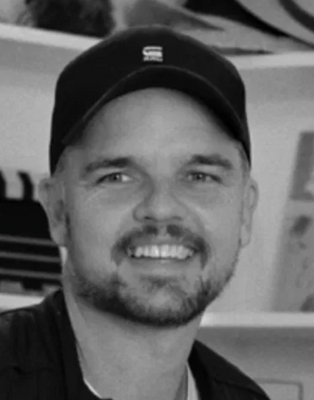Author Interview — DEVELOPING YOUNG WRITERS: Tristan Bancks
Novel Insight on 19th Sep 2023
Author Tristan Bancks has turned his passion for developing young writers into a power packed resource to help teachers and students.
How did you learn to write?
I learnt to write by osmosis and practice and through good teachers. At 19, I started writing for magazines and then bits for TV that I would present. I read lots of scripts that I would interpret and perform as an actor in TV. I wrote short films that I would direct. At about the age of 30, I was given the opportunity to write twelve short books for an educational publisher. From then, through my time of writing books for trade publishers, I really feel that my writing improved. It helped that I worked with some very good editors.
Is there anything about writing that you struggle with?
Many things. It’s such a long process to write a tight 50,000 word novel for middle-graders. I can write a quick, freewritten first draft, but the process from there to having something that feels satisfying in terms of pacing and rhythm and detail and authenticity is a marathon. I write five or six drafts before I share the book with my agent or publisher. And each draft takes anything from 2-4 months to write at around 1000 words / day (sometimes interrupted by speaking work or promoting a new book). The thrill, for me, is not so much in getting published, but in making every book better, tighter, more honest than the last.
I also strive to ensure that I don’t write the same book again and again and that I vary the tools I use on each book. This all takes time.
Do you use multimedia tools when writing?
Yes, definitely. I make a soundtrack for every book and listen to that music over and over again as I write, which sets the tone for the story. I gather lots of images and video and Google Maps to define characters and locations and the feeling of the story.
Recently, I’ve been using an iPad and Apple Pencil to mark up a draft of my manuscript. I reread it and squiggle lots of notes all over the manuscript. Things like ’Shorten! Boring!’ or a tick or an arrow to move a paragraph from top of page to bottom. I then write up all those crazy handwritten notes into the manuscript before I write the next official draft.
I also use my iPhone to take notes, to record voice memos, to take photos of possible locations and screen grabs of possible actors I would cast in certain roles in the story. It’s great when you, as the writer, have a strong visual on who the character is.
Does your experience with film and TV impact your writing process?
I think so. I use the tools of production design and casting and I think about audio and point-of-view and dialogue in the way that a filmmaker might. We’re a very visual and aural culture, so these tools are important for bringing the world of the story to life. I need my book to be more engaging than the video game that the kid would otherwise be playing. And the great thing about writing a book is that you not only have the visual details of the scene, but you get to go inside the characters’ heads, too. Books do that better than other mediums.
What inspired you to start Young Writers’ StorySchool?
I’ve visited over 1000 schools in the past ten years or so, working with young writers and using all of the above digital and analogue tools to inspire them. I’ve learnt a lot about what works and what doesn’t, both for me as a writer and for kids and teens and I have put all of that into StorySchool.
I’ve been dreaming, since 2011, of using video to reach more writers. I can’t get to as many regional schools as I’d like each year and, also, I see enormous value in video as a teaching tool. Not to replace teachers, of course, but to supplement and support the teacher’s approach and knowledge-base.
In 2020, my 100 days speaking in schools became 100 days of Zoom talks and workshops and recorded hour-long talks and, suddenly, I saw the demand for StorySchool and I, finally, committed myself to shooting 24 x 3-4-minute videos with a professional crew and creating teacher’s notes and activity sheets with a teacher.
What style of writing does StorySchool help to develop?
It helps develop authentic, personal, detailed fiction. But the lessons are very useful for writing persuasive pieces and creative, readable non-fiction, too. There are tips on where to begin, how to end a story, using a device to capture ideas, gathering images and video and music and maps, researching ideas, writing outdoors, writing authentic detail and so on.
...It is so well thought out and planned. I’m really impressed with the [included] teacher notes and the suggestions for accelerated learning and low literacy students...
Ngaire Brown Teacher-Librarian Kolbe Catholic College
How can educators integrate StorySchool into classes?
The videos are designed to be screened at the beginning of a lesson to introduce an aspect of writing. It could be creating believable settings, building characters, ’show don’t tell’ or point-of-view. Each video sets 1 or 2 writing challenges that build on one another. The teachers’ notes cover that aspect of writing in greater detail and also offer alternative challenge options for low-literacy kids and extension work for kids who would like to take their writing further.
I recommend Young Writers’ StorySchool for ages 10-14 as a core age, but I know teachers who are using some of the lessons with year 3s who are loving it, and also teachers using it through to year 12 for some recent changes to the year 12 curriculum around creative writing.

